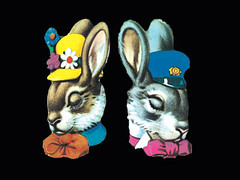Crowdsourcing
Definition from Wikipedia: Crowdsourcing is a neologism for a business model in which a company or institution takes a job traditionally performed by a designated agent (usually an employee) and outsources it to an undefined, generally large group of people in the form of an open call over the Internet. The work is compensated with little or no pay in most cases. However, in a few examples the labor is well-compensated. In almost every case crowdsourcing relies on amateurs or volunteers working in their spare time to create content, solve problems, or even do corporate.
The Rise of Crowdsourcing
Article from WIRED Issue 14.06 June 2006:
Claudia Menashe needed pictures of sick people. A project director at the National Health Museum in Washington, DC, Menashe was putting together a series of interactive kiosks devoted to potential pandemics like the avian flu. An exhibition designer had created a plan for the kiosk itself, but now Menashe was looking for images to accompany the text. Rather than hire a photographer to take shots of people suffering from the flu, Menashe decided to use preexisting images – stock photography, as it’s known in the publishing industry.
In October 2004, she ran across a stock photo collection by Mark Harmel, a freelance photographer living in Manhattan Beach, California. Harmel, whose wife is a doctor, specializes in images related to the health care industry. “Claudia wanted people sneezing, getting immunized, that sort of thing,” recalls Harmel, a slight, soft-spoken 52-year-old.
Read the whole article here...


No comments:
Post a Comment